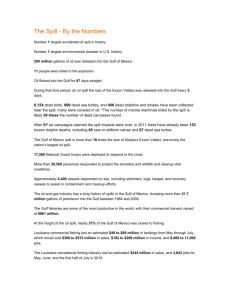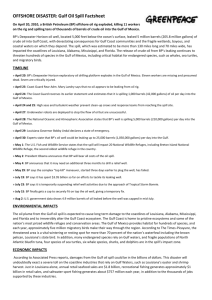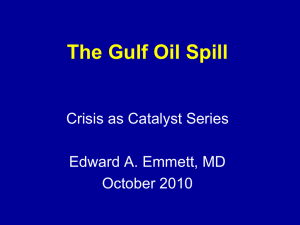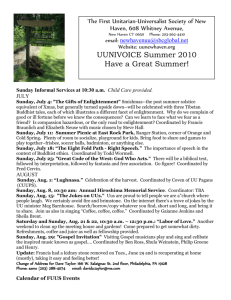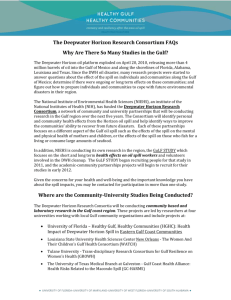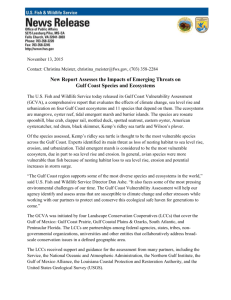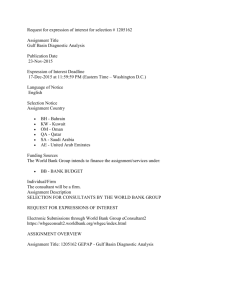How Does the BP Oil Spill Impact Wildlife and Habitat
advertisement
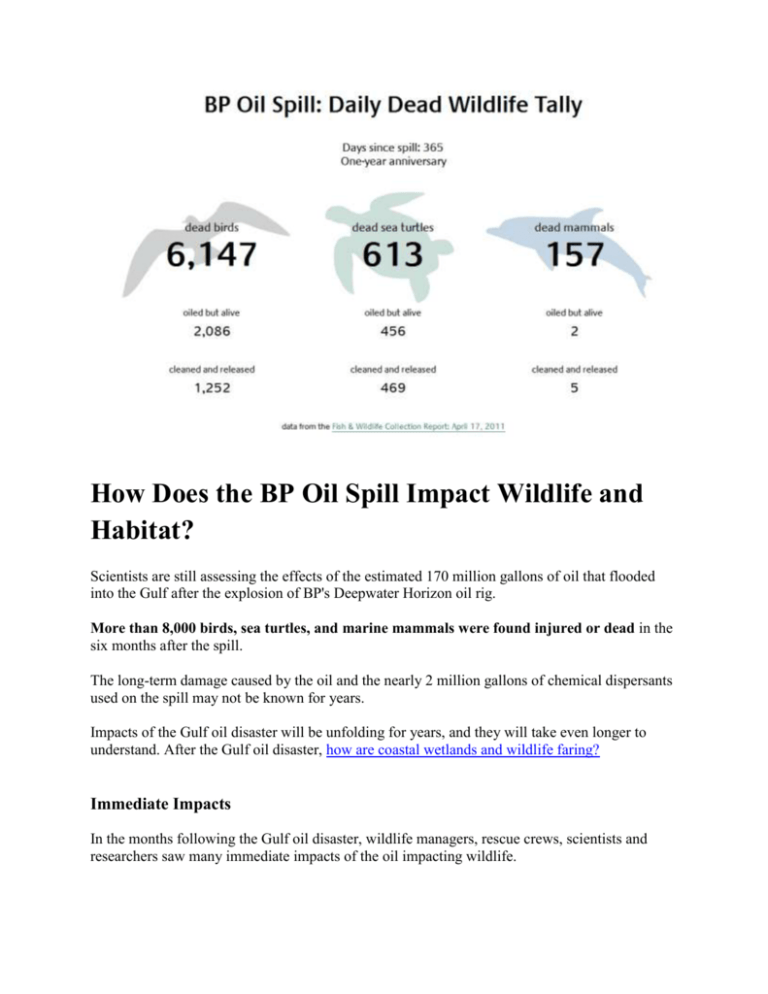
How Does the BP Oil Spill Impact Wildlife and Habitat? Scientists are still assessing the effects of the estimated 170 million gallons of oil that flooded into the Gulf after the explosion of BP's Deepwater Horizon oil rig. More than 8,000 birds, sea turtles, and marine mammals were found injured or dead in the six months after the spill. The long-term damage caused by the oil and the nearly 2 million gallons of chemical dispersants used on the spill may not be known for years. Impacts of the Gulf oil disaster will be unfolding for years, and they will take even longer to understand. After the Gulf oil disaster, how are coastal wetlands and wildlife faring? Immediate Impacts In the months following the Gulf oil disaster, wildlife managers, rescue crews, scientists and researchers saw many immediate impacts of the oil impacting wildlife. Oil coated birds' feathers , causing birds to lose their buoyancy and the ability to regulate body temperature. Mammals could have ingested oil , which causes ulcers and internal bleeding. Sea turtles were covered in oil Dead and dying deep sea corals were discovered seven miles from the Deepwater Horizon well. Long Term Impacts Though oil is no longer readily visible on the surface, it isn’t gone. Scientists have found significant amounts on the Gulf floor, and the oil that has already washed into wetlands and beaches will likely persist for years. We likely will not see the full extent of impacts for many years, which makes creating and implementing successful restoration plans a serious challenge. Unbalanced Food Web - The Gulf oil disaster hit at the peak breeding season for many species of fish and wildlife. The oil’s toxicity may have hit egg and larval organisms immediately, diminishing or even wiping out those age classes. Without these generations, population dips and cascading food web effects may become evident in the years ahead. Decreased Fish and Wildlife Populations - Scientists will be watching fluctuations in wildlife populations for years to come. It wasn't until four years after the 1989 Exxon Valdez oil disaster that the herring population collapsed. Twenty years later, it is still has not recovered. Decline in Recreation - The Gulf Coast states rely heavily on commercial fishing and outdoor recreation to sustain their local economies. According to NOAA, commercial fisheries brought in $659 million in shellfish and finfish in 2008, and just over 3 million people took recreational fishing trips in the Gulf that year. After the spill, recreational fishing from the Atchafalaya Delta to Mobile Bay was shut down from May to August, and state park closures dealt a serious blow to the parks' summer revenue. - See more at: http://www.nwf.org/What-We-Do/Protect-Habitat/Gulf-Restoration/OilSpill/Effects-on-Wildlife.aspx#sthash.xX3OXqkj.dpuf http://www.scientificamerican.com/article.cfm?id=how-did-bp-oil-spill-affect-gulf-of-mexico-wildlifeand-ecosystems


